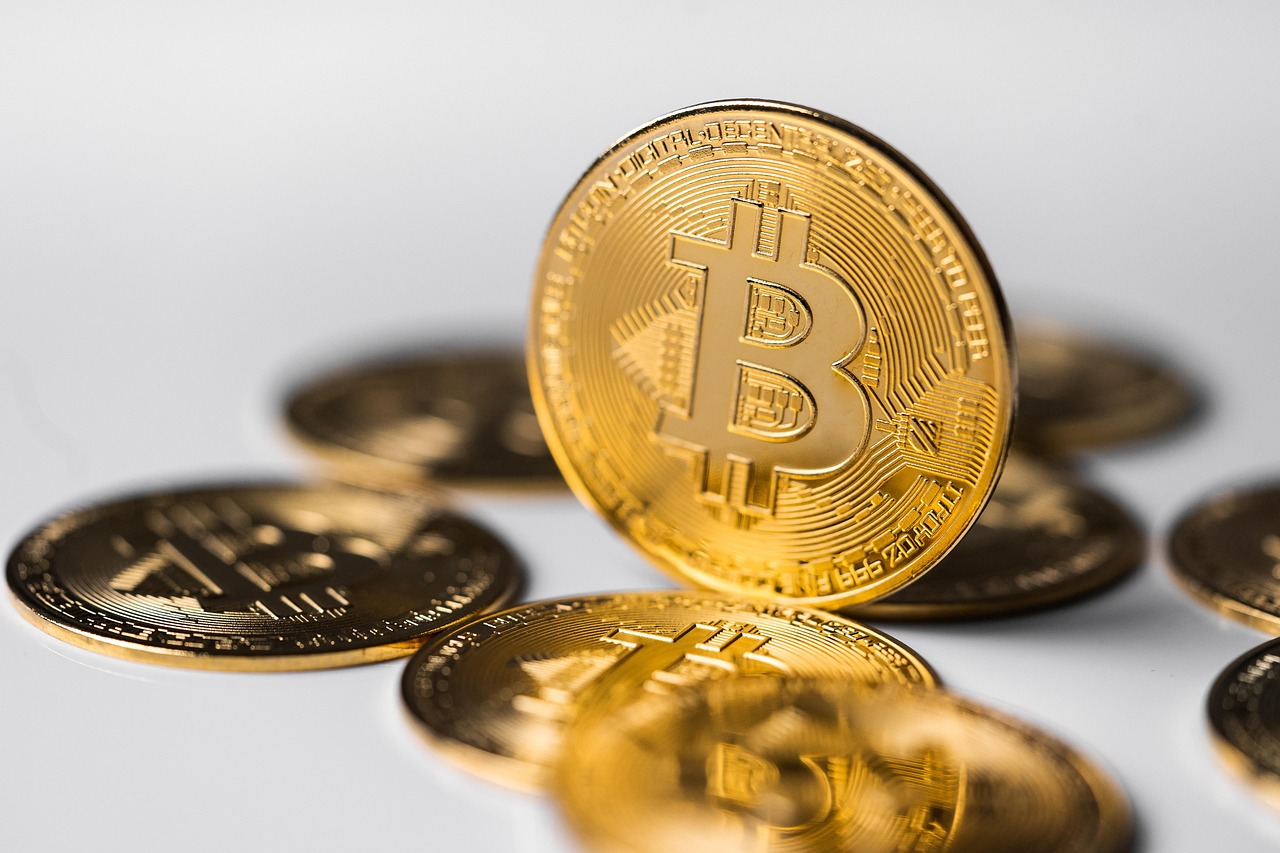The world of cryptocurrency is in constant motion, evolving at a pace that can be both exhilarating and bewildering. From the rise of meme coins to the increasing institutional adoption of Bitcoin, staying informed about the latest crypto trends is crucial for investors, developers, and anyone interested in the future of finance. This blog post will delve into some of the most significant crypto trends shaping the market in 2024 and beyond, providing insights and practical takeaways to help you navigate this dynamic landscape.
Institutional Adoption and Bitcoin’s Maturation
Increased Investment from Traditional Finance
Cryptocurrency is no longer a niche interest relegated to the fringes of the financial world. Major institutions, from investment banks to pension funds, are increasingly incorporating Bitcoin and other cryptocurrencies into their portfolios. This trend signals a growing acceptance of crypto as a legitimate asset class.
For more details, see Investopedia on Cryptocurrency.
- Spot Bitcoin ETFs: The approval of spot Bitcoin ETFs by the SEC in early 2024 has been a watershed moment. These ETFs provide institutional and retail investors with a regulated and easily accessible way to gain exposure to Bitcoin without directly holding the cryptocurrency. Example: BlackRock’s IBIT ETF and Fidelity’s FBTC ETF.
- Corporate Treasuries: Companies like MicroStrategy continue to hold significant amounts of Bitcoin on their balance sheets, viewing it as a store of value and hedge against inflation.
- Pension Fund Allocations: Some pension funds are starting to allocate small percentages of their portfolios to crypto assets, recognizing the potential for higher returns.
- Actionable Takeaway: Monitor institutional investment activity in crypto, especially ETF flows. Large inflows often correlate with price appreciation.
Bitcoin Halving and Its Impact
The Bitcoin halving, an event that occurs approximately every four years, reduces the reward for mining new Bitcoin by 50%. Historically, halvings have been followed by significant price increases due to reduced supply.
- Supply Shock: The reduced supply of new Bitcoin entering the market creates a supply shock, potentially driving up demand and price.
- Miner Adjustments: Miners may need to adjust their operations and strategies to remain profitable after the halving.
- Historical Data: Examining price movements after previous halvings (2012, 2016, and 2020) can provide valuable insights, though past performance is not indicative of future results.
- Actionable Takeaway: Research historical Bitcoin halving cycles and understand the potential impacts on supply and demand. Be prepared for potential volatility around halving events.
Decentralized Finance (DeFi) Continues to Innovate
Real World Assets (RWAs) in DeFi
One of the most promising trends in DeFi is the tokenization of Real World Assets (RWAs). This involves representing tangible assets like real estate, commodities, and bonds as digital tokens on a blockchain.
- Increased Liquidity: Tokenizing RWAs allows for fractional ownership and increased liquidity, making it easier to buy, sell, and trade these assets.
- Improved Accessibility: DeFi protocols can provide access to investment opportunities that were previously only available to wealthy individuals or institutions.
- Examples:
Real Estate: Companies are tokenizing real estate properties, allowing investors to purchase fractional shares.
Commodities: Gold and silver are being tokenized, providing a secure and transparent way to trade precious metals.
Bonds: Government and corporate bonds are being tokenized, offering increased efficiency and lower transaction costs.
- Actionable Takeaway: Explore DeFi platforms that are focusing on RWA tokenization and understand the potential benefits and risks.
Cross-Chain Interoperability
The DeFi ecosystem is currently fragmented across multiple blockchains. Cross-chain interoperability solutions aim to bridge these gaps, allowing for seamless transfer of assets and data between different blockchains.
- Benefits:
Enhanced liquidity by pooling assets from different blockchains.
Increased efficiency by leveraging the unique capabilities of different blockchains.
Reduced congestion on specific blockchains.
- Projects: Projects like Chainlink (CCIP), Cosmos (IBC), and Polkadot are working to create interoperable blockchain ecosystems.
- Actionable Takeaway: Follow the development of cross-chain interoperability protocols and understand how they can improve the DeFi ecosystem. Look for opportunities to participate in cross-chain DeFi applications.
The Rise of Layer-2 Scaling Solutions
Addressing Scalability Challenges
Blockchain scalability remains a significant challenge. Layer-2 scaling solutions are designed to address this issue by processing transactions off the main blockchain (Layer-1) and then periodically submitting aggregated results to the main chain.
- Types of Layer-2 Solutions:
Rollups: Rollups bundle multiple transactions into a single batch, reducing the load on the main chain. Two main types of rollups are Optimistic Rollups (e.g., Optimism, Arbitrum) and Zero-Knowledge Rollups (ZK-Rollups).
Sidechains: Sidechains are independent blockchains that run parallel to the main chain and have their own consensus mechanisms. Example: Polygon.
State Channels: State channels allow participants to transact directly with each other off-chain and only submit the final state to the main chain. Example: Lightning Network.
- Actionable Takeaway: Research different Layer-2 scaling solutions and understand their trade-offs in terms of security, speed, and cost. Experiment with DeFi applications built on Layer-2 networks.
Increased Adoption of Layer-2 Networks
Layer-2 networks are gaining significant traction, with increasing transaction volume and user adoption.
- Examples:
Arbitrum: A popular Optimistic Rollup that hosts a wide range of DeFi applications.
Optimism: Another leading Optimistic Rollup that offers low fees and fast transaction speeds.
Polygon: A sidechain that provides a scalable and low-cost environment for DeFi and NFT applications.
- Actionable Takeaway: Monitor the growth and adoption of Layer-2 networks and identify promising DeFi projects building on these platforms.
NFTs Beyond Art: Utility and Innovation
Evolving Use Cases for NFTs
Non-Fungible Tokens (NFTs) are evolving beyond digital art and collectibles. New use cases are emerging that leverage the unique properties of NFTs to represent ownership, identity, and access.
- Utility NFTs: NFTs that provide access to exclusive content, events, or services. Example: Membership NFTs that grant access to a private club or community.
- Gaming NFTs: In-game items and characters represented as NFTs, allowing players to own and trade their assets. Example: Axie Infinity’s Axies.
- Identity NFTs: NFTs used to verify identity and credentials, providing a secure and privacy-preserving way to manage digital identities. Example: Soulbound Tokens (SBTs).
- Real Estate NFTs: NFTs representing ownership of real estate properties, enabling fractional ownership and easier transfer of ownership.
- Actionable Takeaway: Explore different NFT use cases and identify projects that are innovating in areas such as gaming, identity, and real estate.
The Maturing NFT Market
While the NFT market experienced a boom in 2021 and 2022, it has since matured, with a greater focus on quality and utility.
- Increased Scrutiny: Investors are becoming more discerning and focusing on projects with strong fundamentals and clear value propositions.
- Community Building: Successful NFT projects are building strong communities around their tokens, fostering engagement and loyalty.
- Innovation in NFT Standards: New NFT standards, such as ERC-721A and ERC-1155, are improving efficiency and reducing gas fees.
- Actionable Takeaway: Conduct thorough research before investing in NFTs and focus on projects with strong teams, clear use cases, and active communities. Understand the different NFT standards and their implications.
Conclusion
The cryptocurrency landscape is constantly evolving, and staying informed about the latest trends is crucial for success. From institutional adoption and Bitcoin’s maturation to DeFi innovation and the rise of Layer-2 scaling solutions, the opportunities and challenges in the crypto market are vast. By understanding these trends and taking actionable steps, you can navigate this dynamic landscape and position yourself for potential growth and innovation. Remember to always do your own research and manage your risk accordingly.
Read our previous article: Orchestrating Silicon: The Future Of Heterogeneous Compute




